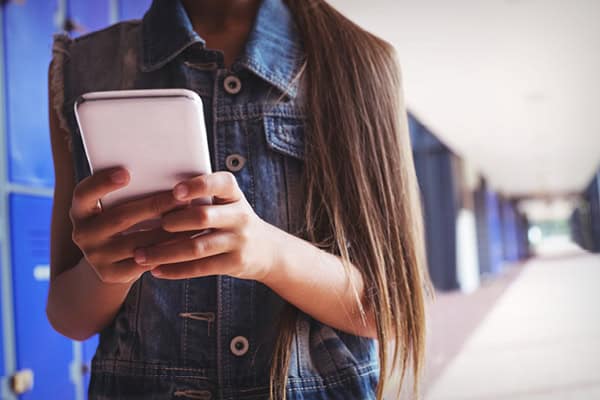Two decades ago, no one could have predicted that a device small enough to fit in a student’s back pocket could upend K-12 education, according to Education Week. But in recent years, cellphones have emerged as educators’ No. 1 nemesis.
Mitchell Rutherford knows this all too well. The Tucson, Ariz.-based educator, who just completed his 11th year as a biology teacher at Sahuaro High School, will not be returning to the classroom next year, in part because of how students’ cellphone use has transformed the nature of the job.
Rutherford spoke to Education Week about how his teaching went from “awesome” to “exhausting” as cellphones became an ever-more prominent part of students’ lives.
“When I started teaching, I wanted my students to use their phones—to do research, to check their grades, to listen to podcasts—not necessarily in class, but in general. I didn’t see it as a big problem in class or in general. There were kids who wanted to check out, who didn’t care about school or their futures. Those kids would go on their phones. But it was a very small percentage.
“What I’ve seen more recently is that even the kids who are the most motivated and want to learn and have dreams and aspirations for their futures—even those kids really struggled, especially this year, with getting off their phones in class and, they told me, outside of class and in between class and at lunch.
“Everywhere you go, everyone’s on their phones. That’s what I started seeing in the classroom, too. I’d be teaching a lesson and students would look up, and then they’d look down. It was just so clear that there were some very addictive tendencies coming out that just wasn’t the deal before.
“I work primarily with sophomores. When the pandemic hit, these students were 12 and 13. This age is the sweet spot for puberty. It’s also the time when you start to feel awkward and uncomfortable and when socialization gets weird and difficult. Add to that the pandemic when, all of a sudden, society was completely upended. As this was happening, it was easier for kids to self-isolate and sit on their phones, to retreat to their phones as a kind of safety from social interaction. Then it became a habit.
“Interestingly enough, in 2023, the longest-running study on human happiness since the Great Depression came out of Harvard, and it found that the No. 1 determining factor of health and well-being is relationships, connections. It became very obvious that my students were not connecting with each other. They weren’t connecting with me either, which is normally the most fun part of teaching.
“I decided right after the pandemic that I would no longer just teach biology. I would teach students to connect, to contemplate, and to be creative. I had kids do lab reports, and in them I would ask them to track things like their habits, and their sleep routines. We talked about why sleep is so important, and why phones prevent them from sleeping well, and I’d have them reflect on it to get to that contemplation piece.
“And then I shifted a lot of the stuff to the connection piece. We would take nature walks and at first it was just silent contemplation with no phones. Then I was like, ‘Let’s hang out with each other.’ I would take them out to a grassy field with trees. And the only rule was that you could not have your phone.
“Some kids would sit in silence, but then others would congregate, and they would just chat and laugh and talk about whatever. Then the kids would write reflections. We did a [cellphone] detox challenge and we’d do mini-reflections where I’d ask them things like, ‘How did it feel to be without your phone?’
“When I had my students track their cellphone use, almost every kid was either shocked or embarrassed by the amount of time they spent on their phones. Almost all of them wanted to find a way out or reduce the time they spent on it. I’ve seen kids change their addictions. I’ve seen kids prefer to talk to each other. I know kids want that. Social connection is the strongest drug of all.
“In the end, I knew I had to leave teaching because of the toll it was taking on my mental health. I wasn’t emotionally available for myself or my wife because I was pouring my heart into my students that I saw struggling with socializing, anxiety, and focus, which in my opinion is largely caused and certainly exacerbated by intentionally designed addictive cellphone apps.”
Education Week





